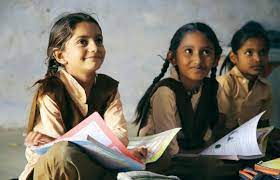 The benefits of girl child education are numerous. For starters, educated girls are more likely to marry at the proper age. In developing countries, early marriage is a leading cause of disease and death for young girls. By marrying at the appropriate age, girls can plan childbirth and keep themselves healthy. Moreover, educated girls tend to have healthier babies, which in turn raises the family’s standard of living. These benefits go far beyond the direct impact of girl child education, however.
The benefits of girl child education are numerous. For starters, educated girls are more likely to marry at the proper age. In developing countries, early marriage is a leading cause of disease and death for young girls. By marrying at the appropriate age, girls can plan childbirth and keep themselves healthy. Moreover, educated girls tend to have healthier babies, which in turn raises the family’s standard of living. These benefits go far beyond the direct impact of girl child education, however.
In addition, girl child education can lead to a more stable and prosperous nation state. The education of females increases their independence, confidence, and the ability to participate in decision-making. Girls who are educated can also become better mothers and care for their children. By investing in girl child education, nations can be more stable and less prone to war and natural disasters. In addition to lowering the risk of child marriage, education of girls can also help reduce the incidence of HIV/AIDS, malaria, and HIV. It is also an important contribution to solving global problems such as climate change.
In addition to helping women achieve their full potential, girl child education can lead to fewer incidences of gender-based violence and poverty. Education will enable women to earn more and contribute to society. With this in mind, the benefits of female education cannot be underestimated. In the long run, girl child education will reduce gender-based violence, increase earning power, and improve their ability to make a difference. And it won’t just be girls who benefit – they will also improve their families’ future.